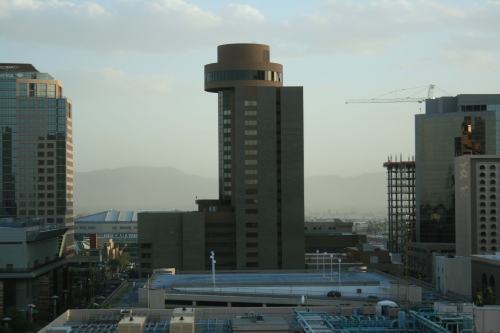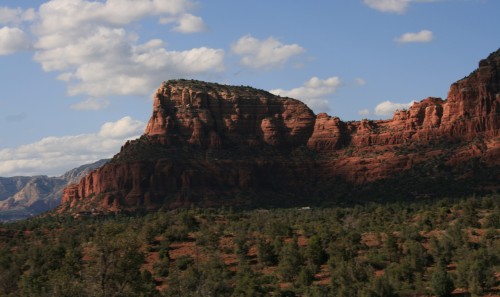To the joy of many Phoenicians, the Downtown Civic Space Park opened this past Thursday. As a resident of Phoenix, I’ve watched over the past several months as the park’s grown from a dirt lot to this:
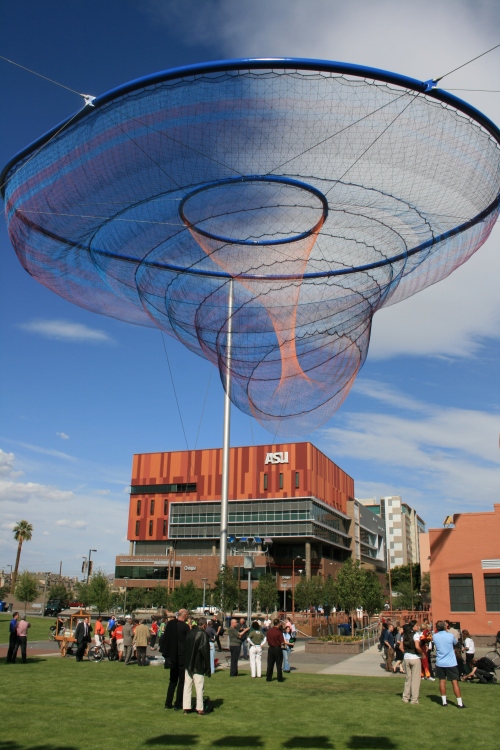
And while some people may criticize Her Secret is Patience, I believe it will become an iconic part of Phoenix like the Love Statue is for New York. But I’m not writing about the park because of its statue or its 2.77 acres of land now set aside for nature, but because of the green features that make it unique from other run-of-the-mill parks.
On top of the shade structures throughout the park are giant sets of solar panels to absorb the ample rays of the Arizona sun:
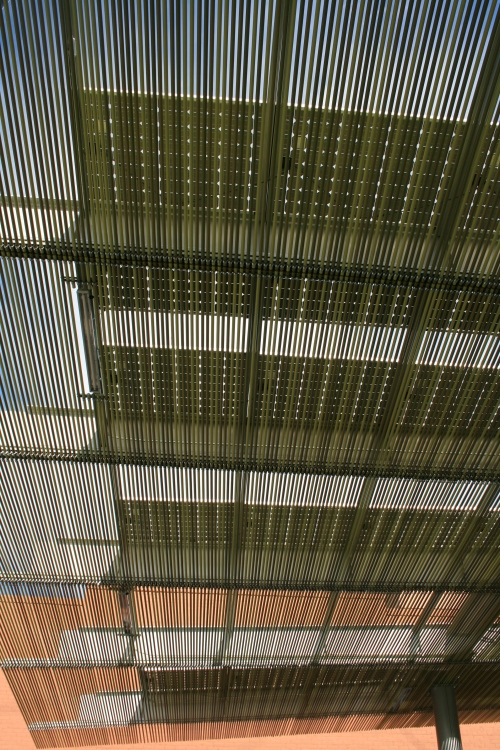
Which is good, because the energy they generate can help power some of the park’s light features like these:
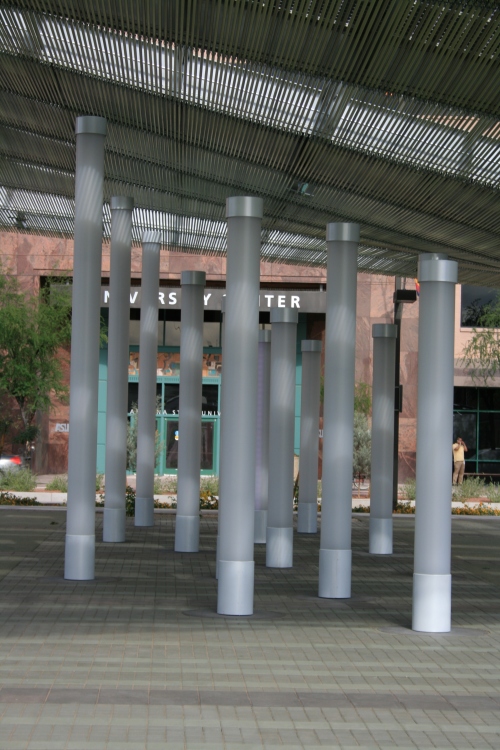
Day
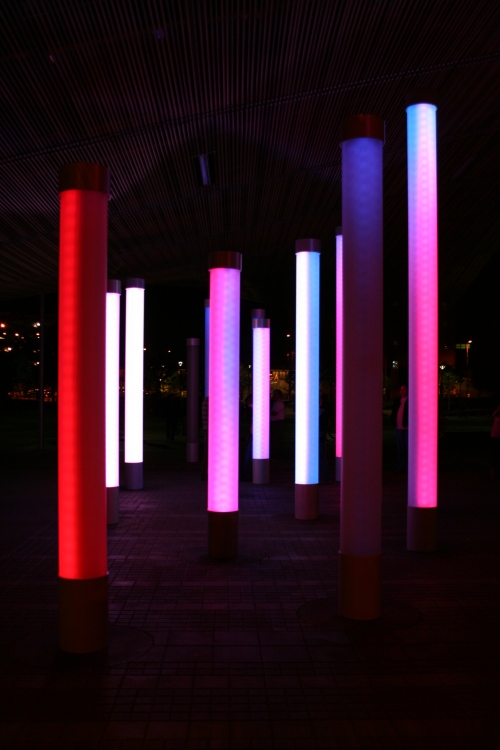
Night

According to a Phoenix press release, the park also has pervious concrete. The concrete’s perviousness cuts down the amount of heat it reflects and allows water to flow through it, keeping water from running off and causing flooding. Here’s a picture of the pervious concrete along one of the planters at the park:

The park also has a rainfall collection system that stores rain, waters the park’s plants and lets the leftover water seep naturally into the ground. This pervious concrete and collection system will help with water runoff and the heat island effect, two environmental issues many large urban cities struggle with.
Civic Space also has native Arizona plants like agave and yucca that require less water and exist naturally in the desert environment. These little natives will get a boost from the park’s specially-selected soil and a grate system for roots that will keep the soil from getting too compact and prevent root damage.
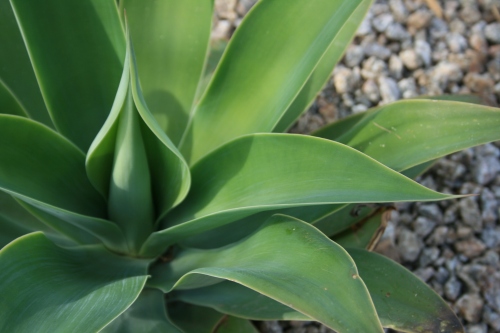

I also had the chance to speak shortly with Terrence Gellenbeck, Solid Waste Administrative Analyst for Phoenix at the opening. He said that the public works department would be attempting a trial run of Civic Space recycling cans sometime in the future to see if it could be successful. He said contamination (where people throw non-recyclable items in recycle cans and render all the items in them un-reusable) had been common in parks they’d tried to start recycling programs in in the past, but that they were hopeful the cans would be more successful at Civic Space.
I predict parks like Civic Space will gradually become the norm rather than the exception for public parks. The innovative use of unobtrusive green features in places like Civic Space makes me optimistic for the incorporation of green design into other parts of our society and everyday lives.
So make a park a part of your day today and go see Civic Space for yourself or appreciate a local park near you. Until then, I leave you with this:
“The fundamental idea behind the parks is native. It is, in brief, that the country belongs to the people, that it is in the process of making for the enrichment of the lives of all of us. The parks stand as the outward symbol of this great human principle.” -Franklin D. Roosevelt





